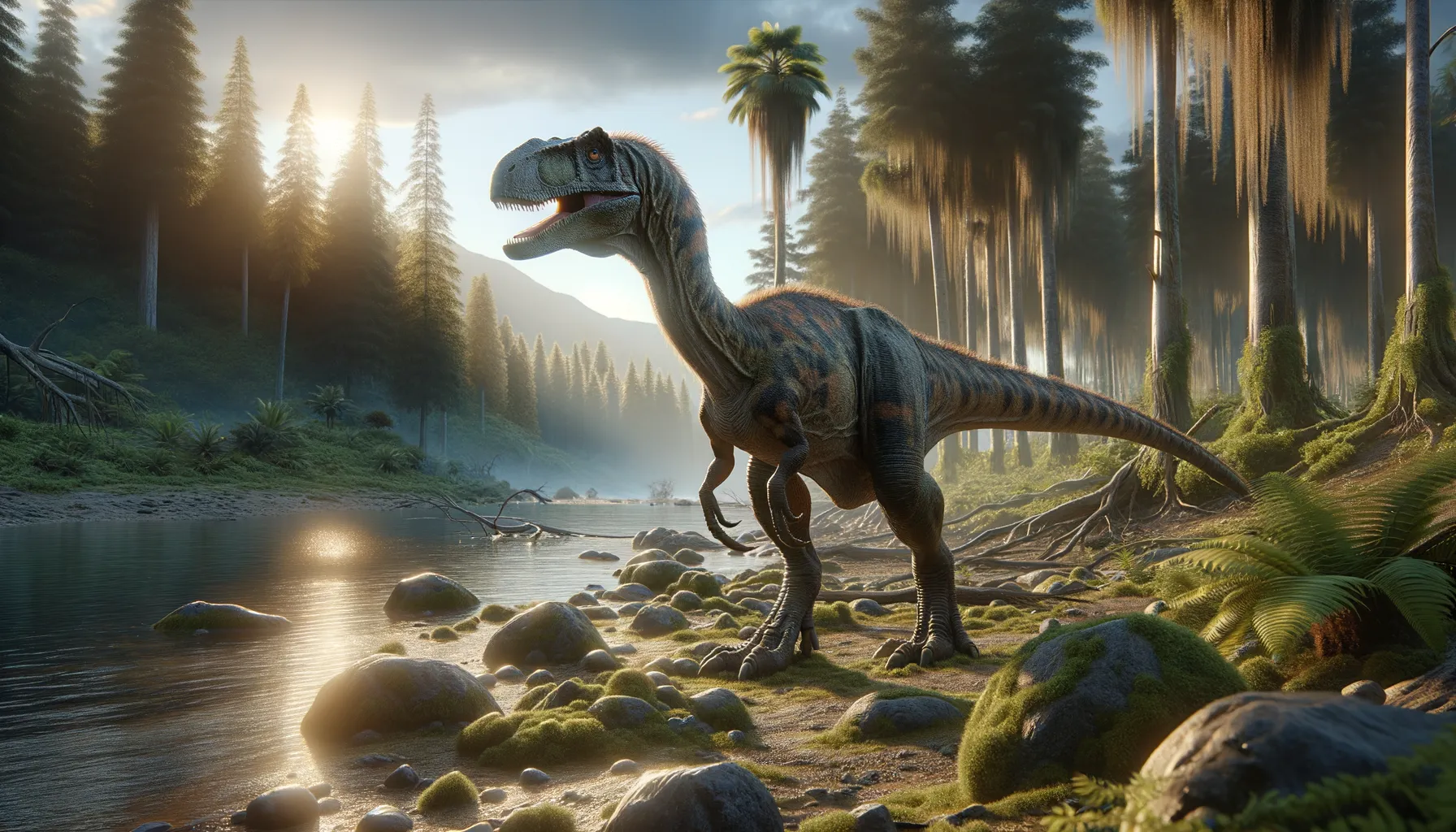
Valdoraptor
Swift predator of the ancient lands.
Period
triassic
Length
Around 4 meters long.
Height
Estimated to be about 1.5 meters tall at the hip.
Weight
Likely around 350 to 500 kilograms.
Valdoraptor was a dinosaur that roamed the earth during the Cretaceous period, known for its presumed agility and predatory lifestyle. Although not much is known due to limited fossils, it is believed to have been a bipedal theropod. It provides insight into dinosaur diversity in the regions that are now Europe. Its evolutionary connections are still under study, making it a fascinating subject for paleontologists.
Diet
Valdoraptor likely had a carnivorous diet, preying on smaller animals and possibly scavenging as well. Its sharp teeth and agile frame suggest it was well-adapted for hunting.
Hunting
Valdoraptor was probably an active predator, using its speed and agility to catch prey. It might have hunted in packs, though evidence is sparse, aiding in taking down larger prey.
Environmental challenges
During its time, Valdoraptor faced various environmental challenges, such as climate fluctuations and vegetation changes. These alterations likely affected prey availability, pushing it to adapt its hunting techniques or move to different areas. Competition with other predators might have also influenced its survival strategies.
Speed
Likely swift, like many theropods.
Lifespan
Estimated around 15 to 20 years.
First discovery
Found in the UK in the early 1990s.
Fun Facts
- Valdoraptor is a theropod dinosaur, which means it was a bipedal carnivore.
- The name Valdoraptor means 'Wealden thief', referring to the Wealden Group rock formation in England where its remains were found.
- It lived during the Early Cretaceous period, about 130 million years ago.
- Though not much of its skeleton has been discovered, it's believed to have been a fast and agile predator.
- Valdoraptor was named in 1991 by paleontologists who studied fragmentary fossils.
- Fossils of Valdoraptor include parts of its legs, hinting at its likely athletic build.
Growth and Development
Valdoraptor, like many other theropods, likely experienced rapid growth phases during its early years. This quick development would have been essential for reaching a size that reduced vulnerability to predators. Its bone development indicates an active lifestyle, possibly aiding in faster maturity.
Habitat
Valdoraptor inhabited regions that were part moist woodlands and part open plains, offering ample opportunities for hunting. Its environment would have been rich in diverse plant life, supporting a variety of herbivorous prey. Seasonal changes in the habitat might have influenced its migratory patterns in search of food.
Interaction with other species
Valdoraptor likely interacted with various other species within its ecosystem, competing with other predators for food resources. It might have coexisted with herbivorous dinosaurs, which it preyed upon for sustenance. Fossil evidence of tracks suggests possible encounters with different dinosaur species.
Natural lifespan
Valdoraptor had a natural lifespan ranging between 15 and 20 years.
Reproduction
Reproduction in Valdoraptor, like many theropods, would likely have involved laying eggs in nests ground or hidden areas. Parental care, if any, remains speculative but might have included guarding or incubating eggs. Fossil nests or eggs are not identified explicitly with this species yet.
Social behaviour
With limited evidence, Valdoraptor's social behavior is not well-documented, but it might have exhibited pack-like tendencies. Group hunting strategies were potentially employed to capture larger prey. Social interactions would have played a crucial role during the breeding season, with displays or calls to attract mates.
Fossil locations
Fossils of Valdoraptor have been mainly recovered in parts of the United Kingdom. The early remains were noted as part of a broader array of theropod discoveries in the region. Few specimens make definitive claims on its behaviors and characteristics challenging.
